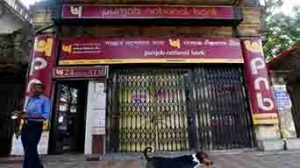Trending Now
- 830 voters names go missing in Kavundampalayam constituency
- If BJP comes to power we shall consider bringing back electoral bonds: Nirmala Sitaraman
- Monitoring at check posts between Kerala and TN intensified as bird flu gets virulent in Kerala
Business
PNB fraud shocking but not surprising; SBI, Bank of Baroda also in total mess
![]() February 15, 2018
February 15, 2018
Punjab National Bank’s share price slipped 9.8 per cent today in the second biggest fall in the past five years. The public sector bank has detected fraudulent transactions amounting to more than $ 1.77 billion from one of its branch in Mumbai in probably one of the biggest scams in Indian corporate history. The stock saw its steepest decline of 10.8 per cent on August 24, 2015, during a five-year period.
It is interesting to note that the bank registered the fifth highest number of bank frauds in the fiscal 2017 amongst the PSBs. It saw a decline in the number of fraud cases from 180 in 2014/15 to 131 in 2015/16; however, it rose to 160 in 2016/17. Amongst the public sector banks (PSBs), with 803 cases State Bank of India reported the highest number of fraud cases, followed by Bank of Baroda (224).
PSBs witnessed 8,622 frauds, involving 1,146 staff between 2015-2017. However, keeping in view that PSBs have about 70 per cent market share, the incidence of such frauds in private sector banks is higher than in PSBs-4,156 frauds involving 568 staffs.
The figures look shocking but the incident is not surprising at all. One of the emerging risks to the financial sector is increasing trends in frauds in commercial banks and financial institutions. During the last five financial years, frauds have increased substantially both in volume and value terms. According to Reserve Bank’s Financial Stability report, June 2017, “during this period, while the volume of frauds (above the cut-off of Rs 100,000) has increased by 19.6 per cent from 4,235 to 5,064, the value (loss incurred) has increased by 72 per cent from Rs 97.5 billion to Rs 167.7 billion.” Share of frauds in advances portfolio continued to be high at 86 per cent of the frauds reported during 2016-17 (in terms of amount involved).
In a number of large value frauds, serious gaps in credit underwriting standards were evident. Some of the often seen gaps are liberal cash flow projection at the proposal stage, lack of continuous monitoring of cash flows and cash profits (EBITDA), lack of security perfection and over valuation, gold plating of projects, diversion of funds, double financing and general credit governance issues in banks. Moreover, almost all corporate loans related fraud cases get seasoned for 2 to 3 years as NPAs before they are reported as fraud.
























